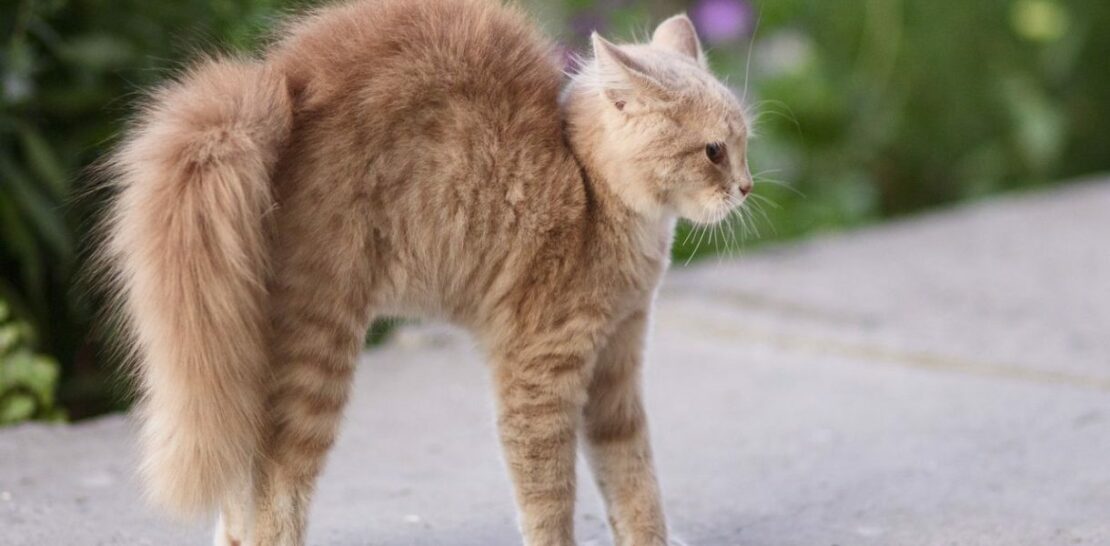As enigmatic and captivating as they are, cats continue to be a subject of fascination for humans.
One of their most intriguing traits is their tail and the various ways it moves, often leaving us to wonder – why does a cat wag its tail?
This comprehensive exploration delves into the science and the numerous possible interpretations behind the feline tail wag, providing cat enthusiasts and language specialists alike with a better understanding of these complex creatures.
A Glimpse into the World of Feline Communication
Before we delve into the tail wag itself, it is crucial to understand the broader context of feline communication and its unique subtleties that set it apart from other animals.
Unlike canines, who are known for their expressive body language and vocalization, cats tend to communicate more subtly, relying heavily on their body, facial expressions, and postures. For a cat, its tail acts as a primary communication tool, conveying a variety of emotions and intentions. By observing and deciphering these tail movements, we can gain valuable insights into a cat’s state of mind and strengthen our bond with our feline companions.
Unlocking the Secret Language of the Feline Tail Wag
Now that we have established the significance of the tail in feline communication let us explore the various meanings behind the enigmatic tail wag. In essence, a cat wagging its tail can signify a range of emotions and intentions, from excitement and playfulness to agitation and aggression.
The key to accurate interpretation lies in understanding the context of the situation and carefully observing the nuances of the tail movement. To assist you in decoding the feline tail wag, we have compiled a comprehensive list of tail movements and their associated meanings:
- The Gentle, Slow Wag: This movement is characterized by a calm, fluid motion of the tail, and often signifies contentment and relaxation. Cats may exhibit this behavior when they are happily lounging in their favorite spot or enjoying some gentle petting from their human companion.
- The Rapid, Back-and-Forth Wag: In contrast to the gentle wag, the rapid, back-and-forth wag is a clear indication of agitation, annoyance, or stress. This could be a result of a perceived threat, such as the presence of an unfamiliar animal, or simply a reaction to an unwelcome disturbance, like a sudden loud noise.
- The Flicking, Tip-of-the-Tail Twitch: This subtle movement, characterized by a quick flicking or twitching of the tail tip, can be a sign of mild irritation or frustration. It is often observed when a cat is attempting to focus on a task, such as stalking prey, and becomes momentarily distracted or interrupted.
- The Puffed-Up Tail: When a cat’s tail becomes puffed up and bristled, it is a clear indicator of fear or aggression. This behavior is a defensive mechanism evolved to make the cat appear larger and more intimidating to potential threats.
By familiarizing yourself with these common tail movements, you will be well-equipped to interpret the emotions and intentions of the feline tail wag accurately.
The Science Behind Feline Tail Movements
Now that we have explored the various meanings behind the feline tail wag, let us delve into the science behind these intricate movements. The tail is a highly complex and sophisticated appendage, comprised of numerous vertebrae, muscles, and nerves that enable its remarkable range of motion.
At the root of the tail lies the caudal vertebrae, which consists of several small bones that form the tail’s skeletal structure. Surrounding these bones are multiple layers of muscles, including the dorsal caudal muscles and the ventral caudal muscles. These muscles, in conjunction with the caudal vertebrae, allow the tail to move in various directions and exhibit a wide range of movements.
Crucially, the feline tail is richly innervated, with numerous nerves transmitting signals from the brain to the tail muscles. The primary nerve responsible for tail movement is the caudal nerve, which branches off from the spinal cord and runs the entire length of the tail. This complex network of nerves and muscles enables the cat to convey its emotions and intentions through the nuanced movements of the tail wag.
Deciphering the Tail Wag: A Guide for CatOwners and Language Specialists
Armed with the knowledge of the various meanings behind the feline tail wag and the science that drives these movements, cat owners and language specialists alike can now confidently decipher the intentions and emotions of their feline companions. However, it is essential to recognize that, like humans, individual cats may exhibit unique quirks and variations in their body language. Consequently, the key to accurate interpretation lies in keen observation and a deep understanding of your cat’s unique personality.
To assist you in honing your feline communication skills, we have compiled a list of practical tips and guidelines that will enable you to better understand and interpret the complex language of the feline tail wag:
- Observe the context: Always consider the situation and environment when interpreting a tail wag. Be mindful of potential stressors or threats that may be causing agitation, and consider your cat’s history and past experiences, as these factors can influence their reactions and communication.
- Pay attention to the nuances: As discussed earlier, subtle variations in tail movement can convey different meanings. Carefully observe the speed, direction, and intensity of the tail wag to accurately determine your cat’s emotions and intentions.
- Consider the entire body: To gain a comprehensive understanding of your cat’s state of mind, take note of their overall body language, including facial expressions, ear positioning, and body posture. All of these elements play a crucial role in feline communication and can provide valuable context for interpreting the tail wag.
- Learn from experience: As you spend more time observing and interacting with your cat, you will become more attuned to their unique body language and communication style. Use this knowledge to continually refine your understanding of their tail movements and strengthen your bond with your feline companion.
By implementing these guidelines and cultivating a deep understanding of feline body language, cat owners and language specialists can unlock the mysteries of the feline tail wag and foster a profound connection with these enigmatic creatures.
In conclusion, the cat tail wag is a complex and nuanced form of communication that can convey a wide range of emotions and intentions. By unraveling the secret language of the feline tail wag, we can not only gain valuable insights into a cat’s state of mind but also strengthen our bond with these captivating creatures. With careful observation, a deep understanding of feline body language, and a genuine appreciation for the subtleties of the cat’s unique communication style, we can bridge the gap between human and feline understanding and enjoy a more harmonious and fulfilling relationship with our furry companions.




